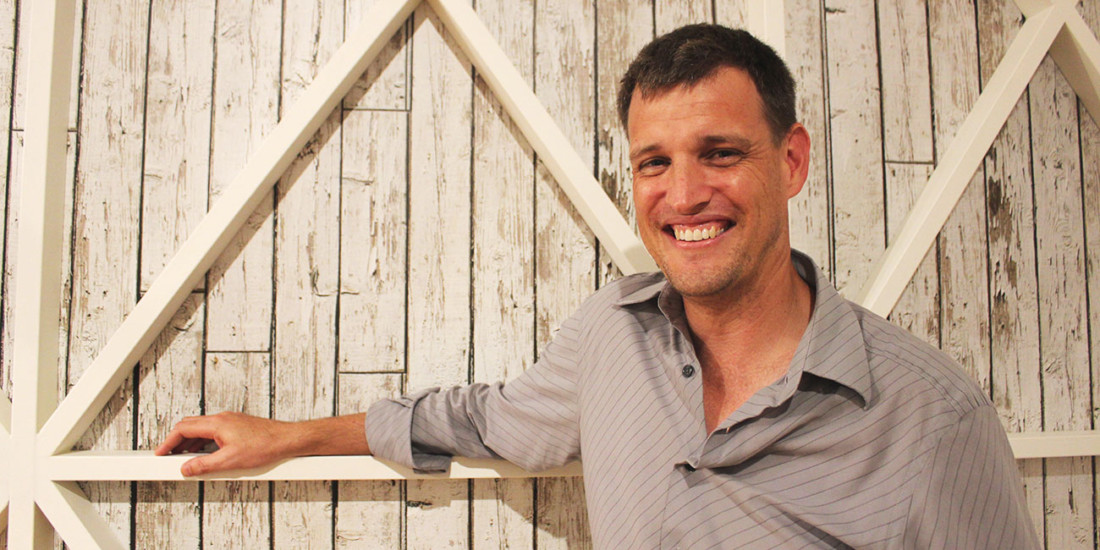Phil Manning, curator, Museum of Brisbane
Brisbane is a city that breathes ...
The photographs featured in the Museum of Brisbane’s upcoming exhibition, The view from here: The photographic world of Alfred Elliott 1890-1940, have certainly had a tumultuous life. Conceived in Brisbane at the turn of the 20th century, the massive collection of glass-plate and film negatives were all taken by one resident over the course of 50 years, capturing iconic landmarks, major events and intimate moments of his personal life. After being left and ultimately forgotten under a Red Hill home for decades, the cigar boxes full of negatives were discovered in 1983 and later acquired by the Museum of Brisbane, which stored the relics away for safe-keeping. After hiding out in the museum’s storage facility for many years, it was simply by chance that museum curator Phil Manning rediscovered an additional 400 film negatives last year, meaning the museum had enough content to curate a full exhibition and share it with the public. Before The view from here opens on Friday February 13, The Weekend Edition caught up with the man who made the discovery to talk Brisbane, its history and its people.
We’re excited to check out the Museum of Brisbane’s upcoming exhibition The view from here: The photographic world of Alfred Elliott 1890-1940. What can visitors expect to see?
The Brisbane experience of one man is told through his photographs of outings, events and city scenes. A large-scale view of the city from the windmill provides the opportunity to interrogate and interact with Brisbane as it was in 1895 and with Elliott’s images placed within this view, it allows the visitor to explore Brisbane as Elliott experienced it. There is also the opportunity to see 19th century Brisbane in 3D.
When did the idea for this exhibition first sprout?
The Museum of Brisbane acquired The Elliott Collection in 1983 and while the museum was located off-site during the refurbishment of City Hall, we produced an interactive exhibition featuring a small selection of the images. The positive reception to this exhibition confirmed our belief that Elliott’s photographs warranted a more intensive exploration and our move back into City Hall has afforded us this opportunity.
The team ended up discovering far more than they first anticipated …
Yes, until last year we thought that The Elliott Collection comprised his tailboard camera and 285 glass-plate negatives, which had been found stored in cigar boxes under a house in Red Hill. While investigating the collection, we found one of the cigar boxes in our storage facility. It was full of envelopes containing over 400 negatives – which had been forgotten since the collection was acquired.
You’re the one who discovered the extra film negatives, what was your first reaction?
I wasn’t expecting to actually find a cigar box, so I was excited just to see we still had one. Even at that point I wasn’t positive that it was part of The Elliott Collection. Upon opening it and seeing it full of envelopes, I had an inkling that this was going to be a fun experience. The majority of the envelopes were annotated and when I recognised Elliott’s handwriting, I knew I’d found something special. This sense of a special discovery kept increasing as they were revealed to be film negatives and dated after the most recent of his glass-plate negatives. To then confirm that these had indeed been forgotten and that they should realise a collection of exactly 50 years of one man’s life in Brisbane is something I’ll cherish as a very rare moment.
What was the most interesting thing you learnt about Brisbane while working on this project?
When Elliott made the first of many trips to Mt Coot-tha with his camera, the feature that was used by the settlers to originally name it was still there. Until 1883 it was known as One Tree Hill, because the first surveyors of Brisbane cut down all but one tree. In 1890 the old tree was fenced off, as it was by then dead and the base of the trunk scarred by camp fires. I love the connection between this image and one of the windmill, since these two features were pivotal in planning for the city that came to be – which Elliott photographed up to 100 years later.
Can you let us in on a few of the events and places captured in the photographs?
There are some favourite locations Elliott visited that will be both familiar but also show how they’ve changed, including the Botanic Gardens, Central Railway Station, Mt Coot-tha and various places around the Bay. Elliott captured how the city was transformed into a stage to welcome royal visitors and extensively documented the events surrounding the departure of troops to the Boer War.
Which is your personal favourite photograph in the exhibition, and why?
It would probably be an image of the ‘Welcome to Brisbane’ arch that was built across Queen Street for the arrival of the Prince of Wales in 1920. Elliott’s photographs are usually very composed, capturing Brisbane as he wanted it recorded. But in this shot, a young boy wearing shorts and no shoes has wandered into the edge of the shot, giving us a glimpse of other people’s lives that Elliott wouldn’t have intended.
What will locals learn from joining one of your free Curators Tours?
Our own view of place is personal, so through Elliott’s photographs we have the opportunity to see how one man decided to capture the city. Since we know very little about Elliott, we’ll use his photographs to see what they can tell us about him and how their content provides a perspective on the personality of Brisbane. Hopefully it will prompt us to consider what perspective our own photographs, if found in 100 years, would convey about the history of the city.
It sounds like you’ve nabbed yourself quite the dream job with the Museum of Brisbane, what’s been your favourite project to work on so far?
I love being back in Brisbane and particularly back at Museum of Brisbane. I was lucky enough to arrive in time to work on Captured, which was curated by Michael Aird last year. For me, it represents another step forward in the museum being a space for other voices to be heard and deliver a broader representation of the stories of this place.
What upcoming exhibitions should we mark in our diaries?
Opening in June is William Bustard: Painting with light, showcasing how one of our important artists conveyed the brilliant Queensland light in his paintings and stained-glass windows. Other exhibitions in 2015 include a filmic exploration of one of Brisbane’s creeks, innovative perspectives on Brisbane by renowned photographer Robyn Stacey and an intimate portrayal of a suburban street by painter Stephen Nothling.
What fascinates you about people and social history?
I remember walking to a concert in Fortitude Valley and someone remarked that it was such a different group of people to usual, when a stranger we were passing interjected with ‘you are so not different’. This experience sums up what it is about people and history that I find so interesting, that our perspectives are based on context and knowledge. Through exploring people’s experiences within their historical context, we gain an appreciation of the diverse paths we’ve taken to get to where we are now. Social history can reflect public interest, but its power is that it can also shape discussion.
You’ve worked in museums around the country, how does Brisbane compare?
It is a city that breathes. We have a healthy and vibrant combination of cultures, art and sport, but for me it’s the hills and trees that provide a constant source of refreshment and major point of difference. The aspect I had missed the most is just being able to drive to the top of any hill, pull over and take in the view of green suburbs, enhanced in spring by the blocks of colourful flowers. This is free, accessible to everyone and something too easily taken for granted.
What are your words of wisdom?
I’m too young to be wise, but I try to remember to always make the effort to notice.
Only a Brisbane local would know that … Lang Park was such an apt name for the home of modern battles with New South Wales.
FAVOURITE WEEKEND SPOT TO:
Perk up … Blackstar Coffee, West End.
Relax … Sunshine Coast.
Be inspired … by the river, where an ancient feature constantly changes and provides the backdrop to the movement of modern life.

